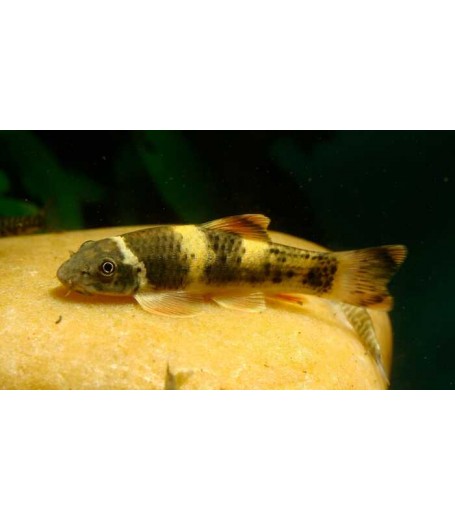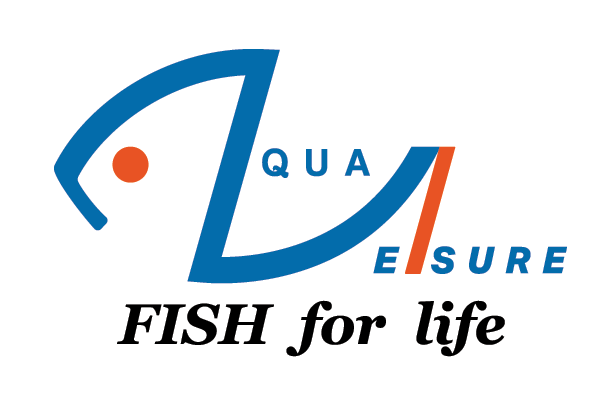PANDA GARRA
- RM0.00
| Name | Panda Garra |
| Other Names | Panda nibblefish, Striped garra, Rainbow garra |
| Scientific Name | Garra Flavatra |
| Tank size (minimum) | 20 gallons (~80 liters) |
| Keeping | Easy – Medium |
| Breeding | Hard |
| Size | up to 8 cm (~ 3.5 inches) |
| Optimal Temperature | 21 – 25 °C (70 – 77 °F) |
| Optimal PH | 6.5 – 7.5 |
| Optimal GH | 2 – 12 |
| Optimal KH | 2 – 8 |
| Dwellers | Mid and bottom |
| Nitrate | Less than 20 |
| Diet | Omnivore |
| Temperament | Peaceful |
| Life span | up to 6 years |
| Color Form | Dark with yellow spots |
anda Garra are not loaches or catfish. Garra Flavatra, is a cyprinid species (Minnows or carps).
The species is relatively small and normally grows to a maximum of 2.5 – 3 inches (6 – 7 cm). Although there have been reports that some Panda Garra that have grown to be 4 inches (10 cm). I have never seen one that large.
Most species of Garra are nearly uniformly brownish to blackish, with sparse, insignificant markings. However, Garra flavatra is unique in the genus with a contrasted pattern of dark brown vertical bars with yellowish interspaces. The fish are normally lighter colored with darker blotches of color.
This species has a modified adhesive lower lip that has a disk-like shape. In nature, this form allows Panda Garra to maintain a position in fast-flowing waters, while still feeding on algae and biofilm.
Once a proper aquarium is set up and optimum living conditions are met, Panda Garra can live up to 5 – 6 years or slightly more.
Behavior
Panda Garra are not shy fish. On the contrary, they are very active fish and prefer spending most of the time in the open looking for food. They also get very tame and associate you with food very fast. They will eat out of your hand and eventually even chill in your hand.
Although they also do not mind the company of their own kind, Panda Garra are not considered as schooling fish and can be kept alone in the tank.
In the company of their own, they love to chase each other in a playful way but in some cases, they can show aggression against each other. If you see that they start losing black coloration and become more yellowish, it is a sign that they are irritated and ready to fight.
Well, the fight is a big word for that, it is more like a scuffle when they start pushing each other from the territory. Once the battle is won and the opponent is not seen, Panda Garra do not chase and do not harass the loser. In addition, they go back to their normal colors almost instantly.
Tip: It is not recommended to buy a small group of Panda Garra. In small numbers, they are more aggressive to each other. Therefore, it should be either one or at least 4 – 6 of them.
Feeding
For the most part, the Panda Garra enjoy eating algae and biofilm. There are some reports that they can eat even black beard algae. However, this is not the only thing that they will eat in the tank.
Actually, the species is omnivorous, which means that the Panda Garra will eat a variety of different foods, including foods that contain protein. You can feed the Panda Garra:
- blood worms,
- brine shrimp,
- daphnia,
- black worms
Water Parameters:
Temperature: The water in the tank should be anywhere between 70- and 77-degrees Fahrenheit. The equivalent in Celsius is 21 to 25 degrees Celsius. If the temperature of your home normally falls in this range, you are set. You will not need a tank heater to maintain the correct temperatures.
If your house tends to get colder, you may need to invest in a tank heater for your tank. At the same time, Panda Garra do not like the very warm temperature in the tank. So, it is better to keep on the lower end of that recommended range.
Hardness: The tank itself should preferably have a medium water hardness. However, anything in the 2 – 12 dGH range is fine.
pH: Panda Garra also prefer a neutral pH level. A healthy range falls between 6.5 and 7.5 pH.
Ammonia and nitrites should be as close to 0 ppm as possible. You should also keep Nitrates near 0. However, it is okay if the Nitrate levels aren’t exactly at 0ppm. Algae is near impossible to grow when there are no Nitrates in a tank.
Temperature: The water in the tank should be anywhere between 70- and 77-degrees Fahrenheit. The equivalent in Celsius is 21 to 25 degrees Celsius. If the temperature of your home normally falls in this range, you are set. You will not need a tank heater to maintain the correct temperatures.
If your house tends to get colder, you may need to invest in a tank heater for your tank. At the same time, Panda Garra do not like the very warm temperature in the tank. So, it is better to keep on the lower end of that recommended range.
Hardness: The tank itself should preferably have a medium water hardness. However, anything in the 2 – 12 dGH range is fine.
pH: Panda Garra also prefer a neutral pH level. A healthy range falls between 6.5 and 7.5 pH.
Ammonia and nitrites should be as close to 0 ppm as possible. You should also keep Nitrates near 0. However, it is okay if the Nitrate levels aren’t exactly at 0ppm. Algae is near impossible to grow when there are no Nitrates in a tank.
Reviews
There are no reviews for this product.



